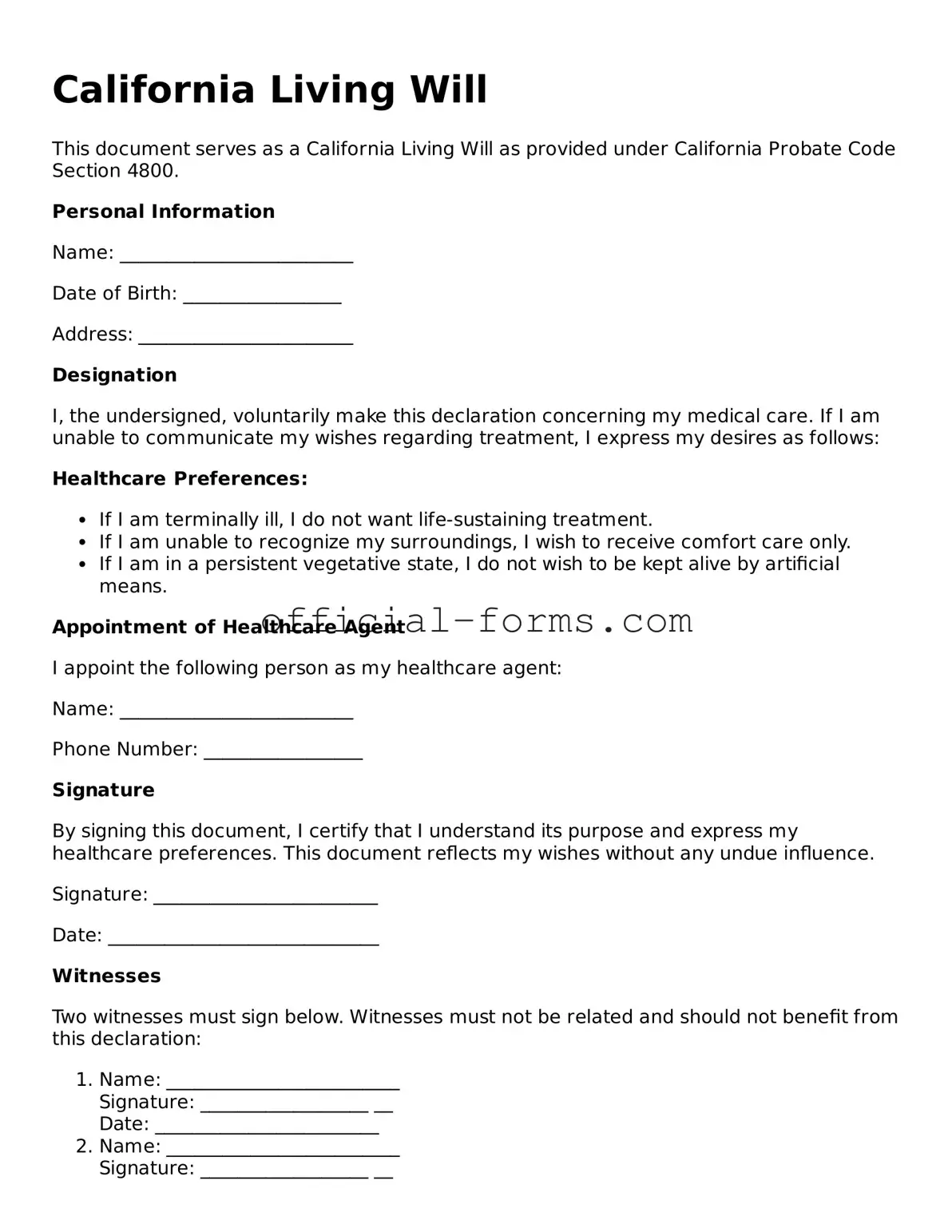Filling out a California Living Will form is an important step in ensuring that your healthcare preferences are respected. However, many people make common mistakes that can lead to confusion or complications later. Understanding these pitfalls can help you create a clear and effective document.
One frequent mistake is not being specific enough about your wishes. When detailing your preferences for medical treatment, vague language can lead to misinterpretation. It’s crucial to clearly outline the types of treatments you do or do not want, such as life-sustaining measures or palliative care. Specificity helps healthcare providers make decisions that align with your values.
Another common error is failing to sign and date the document properly. A Living Will is only valid if it is signed by you and, in some cases, witnessed or notarized. Ensure that you follow the requirements outlined by California law. If the form is not signed or dated correctly, it may not hold up when needed.
Many people overlook the importance of discussing their wishes with family members and healthcare providers. Without these conversations, loved ones may be unsure of your preferences when it matters most. Open dialogue ensures that everyone understands your desires and can advocate for them if necessary.
Some individuals forget to review and update their Living Will periodically. Life circumstances change, and so do personal preferences regarding medical care. Regularly revisiting your document ensures that it reflects your current wishes and life situation. It’s advisable to review it at least every few years or after significant life events.
Additionally, a common mistake is not appointing a healthcare proxy or agent. While a Living Will outlines your wishes, having someone designated to make decisions on your behalf can provide additional clarity. Choose someone you trust, and discuss your preferences with them to ensure they understand your values and desires.
Lastly, neglecting to keep copies of the completed form can lead to issues when it is needed. Make sure to provide copies to your healthcare providers, family members, and anyone else involved in your care. This ensures that your wishes are accessible and can be followed without delay.
By being aware of these common mistakes, you can create a California Living Will that effectively communicates your healthcare preferences. Taking the time to fill out this important document correctly can provide peace of mind for both you and your loved ones.
